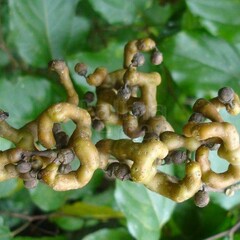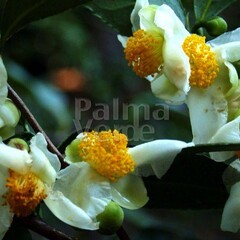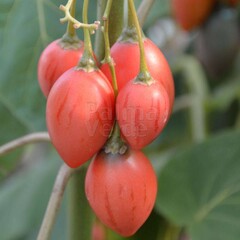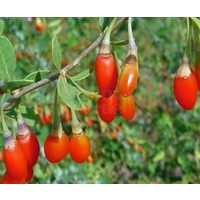Lycium barbarum is also known under the names Gojiberry and comes from China near the Himalayas and Tibet.
The shrub-shaped plant grows to about 150/200 cm high when grown, but can be pruned in early spring if it becomes too large.
In the spring, the elongated leaf appears, which becomes around 2 cm long.
The old tribe of the Goji berry concealed quickly and on the annual hanging wood appear later in the spring purple flowers.
This bloom is typical of the nightshade family.
After they have finished flowering, the fruits of the goji berry grow, they are first green, but if they ripen in the summer they become bright orange / red in color.
The berries are elongated / oval and about 2 cm long.
The brightly colored berries on the plant is a beautiful sight.
The berries are very medicinal and have a good influence on health (contains vitamins, amino acids, carotene, rutin and polysaccharides) and are also good in taste.
Works against early aging complaints, reduced vision, respiratory diseases and dizziness. According to the Chinese, regular eating of the Goji berry would retain youthfulness in the body.
You can keep fresh berries for about one week and consume them.
You can also freeze the berries. The berries are used to make Goji berry juice, jam, jelly or they are dried up like currants. Tea is also made.
The taste of the Goji currants is a bit fresher than that of raisins and currants.
Except that the Goji berry can be kept perfectly in the ground, it can also be kept as a container plant. This perennial is deciduous in winter. The winter hardiness of the Lycium barbarum is very high and good to keep in our climate.
Winter hardiness zone 6b (-20ºC).












